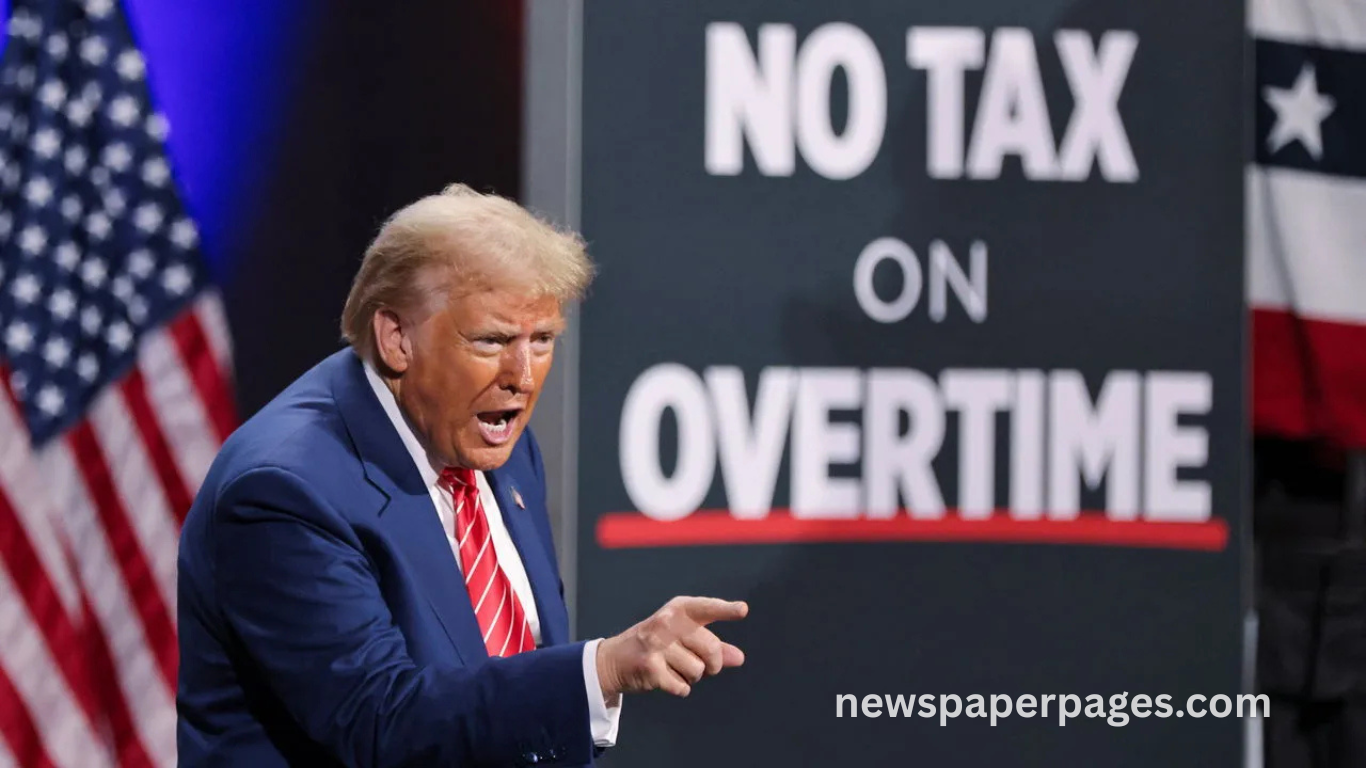The political landscape in the United States is abuzz with renewed tax policy discussions as Republicans rally behind former President Donald Trump’s latest proposal: a promise of “No Tax on Overtime.” This idea, designed to appeal to America’s hardworking middle and lower-income earners, seeks to eliminate federal income tax on wages earned through overtime work. The proposal signals a strategic effort by Republicans to draw in working-class voters ahead of the 2024 elections, portraying the GOP as the party of the American worker.
With growing concerns about inflation, stagnant wages, and long hours, the notion of tax-free overtime resonates with a significant portion of the workforce. GOP lawmakers have started fleshing out the details of the policy, with several bills in development and increasing momentum within conservative circles. This article explores what the proposal entails, its economic implications, and the political motivations behind it.
Understanding Trump’s ‘No Tax on Overtime’ Proposal
The core idea of the proposal is to exempt all overtime pay from federal income tax. Under current IRS rules, overtime pay is treated the same as regular wages, often pushing workers into higher tax brackets. Trump’s plan aims to change this, offering relief to employees who work more than 40 hours per week, particularly those in blue-collar and service jobs.
Political Motivation Behind the Tax-Free Overtime Plan
Republicans see this initiative as a way to reclaim their working-class base and challenge Democratic dominance among labor unions. By targeting a policy that directly benefits wage earners, the GOP hopes to reshape its image and gain broader electoral appeal in critical swing states.
Legislative Efforts and Key Sponsors in Congress
Several GOP lawmakers, including senators and representatives from industrial states, have already expressed strong support for the plan. Draft legislation is being prepared, with committee hearings expected in the coming months. While the plan faces opposition from some fiscal conservatives and budget hawks, its populist appeal may push it forward.
Economic Impact on Workers and Employers
If enacted, the policy could boost take-home pay for millions of workers, encouraging increased productivity and hours worked. However, some economists warn that it might lead to labor exploitation or reduced hiring, as employers could push current staff for more overtime instead of expanding the workforce.
Read More : Trump’s Pick for Washington’s Top Prosecutor Faces Long Confirmation Odds
Reactions from Labor Unions and Advocacy Groups
Labor unions are divided on the issue. Some praise the move as a win for workers, while others caution that it might undermine long-standing battles for better base wages and full-time hiring. Worker advocacy groups also express concern over the proposal’s lack of broader tax reform.
Read More : Trump’s Pick for Washington’s Top Prosecutor Faces Long Confirmation Odds
Comparison With Past Tax Relief Measures
Trump’s overtime tax plan follows a long history of targeted tax relief initiatives, including the Bush-era tax cuts and Trump’s 2017 Tax Cuts and Jobs Act. However, most past reforms have focused on income brackets or business incentives, not directly on overtime pay, making this proposal relatively novel.
Budgetary Concerns and National Deficit Considerations
A central sticking point for the proposal is its potential impact on federal revenue. Experts estimate that exempting overtime pay could cost billions annually, raising concerns about increasing the national deficit. Republican lawmakers must address how to offset this loss, possibly through spending cuts or closing tax loopholes.
Public Opinion and Electoral Strategy
Polling shows strong support for the idea among working-class voters, including independents and some Democrats. As a campaign tool, the plan is seen as a powerful message that could sway undecided voters in key battleground states. Democrats, meanwhile, are developing counter-narratives focusing on wage growth and job security.
Frequently Asked Questions
What does Trump’s ‘No Tax on Overtime’ plan propose?
The plan seeks to eliminate federal income taxes on wages earned through overtime work, providing workers with higher take-home pay.
Who will benefit most from this proposal?
Hourly and salaried workers who regularly clock overtime hours, particularly in industries like manufacturing, healthcare, and retail, will benefit the most.
Is this proposal already law?
No, the proposal is currently under discussion in Congress and has not yet been passed into law.
How will this affect the federal budget?
Analysts project a significant decrease in federal tax revenue, which could increase the national deficit if not offset by spending cuts or new revenue sources.
What are the criticisms of the plan?
Critics argue it may lead to worker exploitation, budget imbalances, and reduced incentives for employers to hire more full-time staff.
How does this differ from previous tax reforms?
Unlike past reforms that targeted income brackets or corporate tax rates, this plan specifically exempts overtime wages from federal taxation.
Are Democrats supporting this plan?
Most Democrats are skeptical, preferring comprehensive tax reform and emphasizing wage increases rather than targeted tax exemptions.
When could the plan be implemented if approved?
If approved, the plan could take effect as early as the next fiscal year, though this depends on the speed of the legislative process.
Conclusion
Trump’s ‘No Tax on Overtime’ proposal has stirred significant debate in Washington and across the country. Promising to boost worker income while raising budgetary and ethical concerns, the plan represents a bold political move. As Republicans continue to flesh out the proposal, its future remains uncertain but undeniably influential in shaping the 2024 election narrative.

